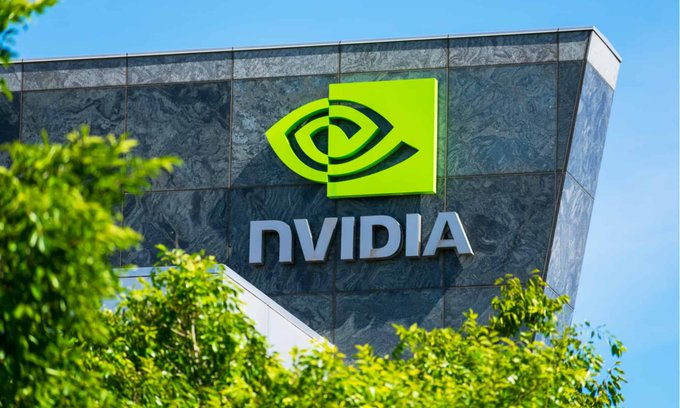
In a significant move that could redefine the landscape of artificial intelligence (AI) server manufacturing, Nvidia (NYSE: NVDA) and Foxconn are reportedly in discussions to deploy humanoid robots at a new Foxconn factory in Houston, Texas. This facility is set to produce Nvidia’s advanced AI servers, including the highly anticipated GB300. The potential integration of humanoid robots marks a pivotal step in both companies’ push towards advanced industrial automation and is anticipated to transform manufacturing processes.
Nvidia is reportedly in talks with Foxconn for deploying humanoids
According to the Reuters report, this collaboration would be the first time Nvidia products are manufactured with the assistance of humanoid robots, and it would also be Foxconn’s inaugural AI server factory to utilize such robots on a production line. While specifics regarding the type, appearance, and initial number of robots remain undisclosed, a deployment is aimed for by the first quarter of next year, coinciding with the factory’s production ramp-up.
The choice of the new Houston factory for this pioneering initiative is strategic. Being a newly constructed facility, it offers more ample space compared to existing manufacturing sites, making it an ideal environment for the efficient integration of these advanced robotic systems.
Nvidia and Foxconn have been partners for quite some time
Foxconn is the world’s biggest electronics contract manufacturer and produces the bulk of Apple iPhones. However, the Taiwan-based company has been diversifying into other industries, including electric cars. It formed a joint venture with Saudi Arabia to make electric cars in the country and also aspires to one day make cars for Tesla.
Nvidia and Foxconn have also been long-time partners and, among others, have a partnership to develop an autonomous driving platform. Last month, the two companies announced that they are working with the Taiwan government to build an AI factory supercomputer that will deliver NVIDIA Blackwell infrastructure.
Humanoids could be the next big thing
The deployment of humanoid robots in this high-tech manufacturing environment signifies a major leap in industrial automation. It highlights a growing trend across various sectors, with automakers like Mercedes-Benz and BMW already testing humanoids on their production lines, and Tesla actively developing its own robotic solutions.
Notably, Tesla CEO Elon Musk is quite bullish on the Optimus humanoid that the company is developing and believes that it could become Tesla’s “true magnum opus” and even surpass the iPhone in terms of value, potentially becoming the “most valuable product in history.”
He has predicted that Optimus could generate over $10 trillion in revenue long-term, and potentially add $25 trillion to Tesla’s market cap. The world’s richest person projects that once Tesla reaches a steady state of producing over 1 million units a year, the production cost of Optimus could be less than $20,000 per robot.
Notably, Tesla is among the key customers for Nvidia as the company buys its chips to fuel its AI ambitions. However, while the company uses Nvidia chips for training its AI models, it uses custom-designed chips for Optimus.
That said, growing demand for humanoids could drive the demand for Nvidia chips. Jensen Huang, NVIDIA’s CEO, has explicitly stated that “physical AI” – AI that can perceive, reason, plan, and act in the real world – is the next frontier, and humanoid robots are a prime example.
Nvidia is moving towards record highs
Meanwhile, after having plunged below $100 in April, Nvidia stock is now inching towards its all-time highs. The company reported better-than-expected earnings in its fiscal Q1 2026 despite headwinds from the China export restrictions.
The company’s revenues came in at $44.1 billion, 69% higher than the corresponding quarter last year. This surge was largely propelled by the insatiable demand for its powerful graphics processing units (GPUs) in data centers for AI workloads.
The company booked a $4.5 billion charge related to excess inventory and purchase obligations of H20 products due to new US export licensing requirements for China. This significantly impacted the reported gross margin and earnings per share. Excluding this charge, the non-GAAP gross margin would have been a healthier 71.3%.
On multiple occasions, Nvidia has warned that its long-term competitiveness in China, which accounted for 20% of its data revenues before the ban, might be negatively impacted, and it would lose out on business in the country.
Despite the China-related headwind, Nvidia provided a strong outlook for the second quarter of fiscal 2026, forecasting revenue of $45 billion at the midpoint. The company also expects gross margins to recover to around 72%, with aspirations to reach the mid-70% range by year-end as Blackwell production scales.
Chinese companies could challenge NVDA’s dominance
Nvidia has said that US export control restrictions have “failed” and are instead counterproductive as they are spurring innovation in the country. So far, Nvidia has had an almost monopoly in the AI chip market. However, Huawei’s latest GPU, if it indeed turns out to be as powerful as what the company is claiming, could be a major threat to Nvidia.
Huang has repeatedly stated that if the US restricts its own technology companies from operating in China, Huawei is well-positioned to fill that void. He believes that Huawei will effectively “have China covered” in terms of AI technology, building out its own ecosystem. This highlights his concern that US sanctions, rather than hindering China’s AI development, might actually accelerate Huawei’s rise as a domestic alternative.
Notably, Huawei faced crippling US sanctions in the past. However, the Chinese tech giant managed a chip breakthrough despite these sanctions. The company’s smartphones working on these chips are quite popular with Chinese consumers, and its soaring sales are coming at the cost of iPhone sales in the country.
Apple has been gradually losing market share in China as domestic smartphone companies, especially Huawei, whose business suffered a near-death blow due to the US sanctions, have come up with attractive offerings. Last year, Apple lost its market-leading position in the Chinese smartphone market to Vivo, with Huawei coming in a close third.


Question & Answers (0)